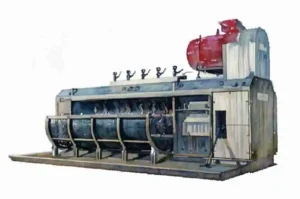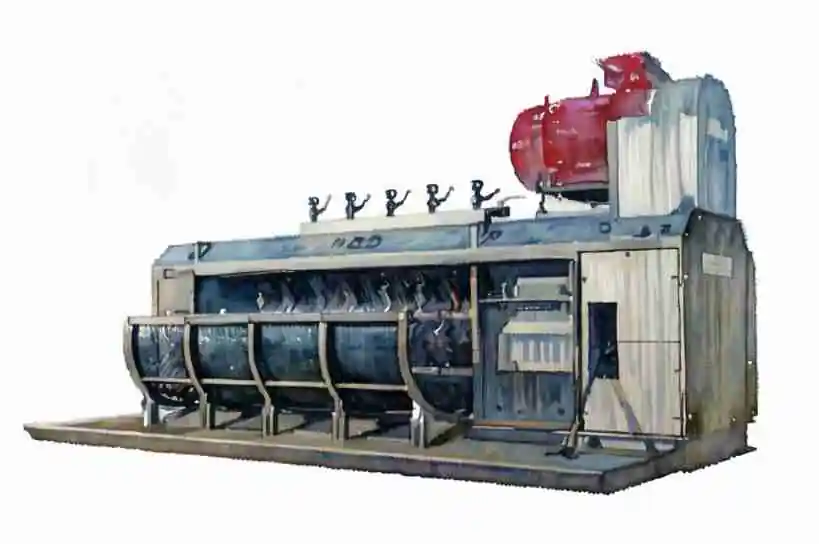Technical Review: Mavitec Green Energy Paddle Depacker for Organic Food Waste Processing
The Mavitec Green Energy Paddle Depacker is marketed as an efficient and versatile solution for separating organic food waste from packaging, designed to address the growing needs of food waste depackaging in compliance with environmental and regulatory standards. As more waste management facilities adopt processes to reduce landfill contributions and promote organic waste recycling, the Mavitec Paddle Depacker has gained attention for its potential to effectively manage food waste streams while limiting microplastic contamination, a rising concern in the waste processing industry. This article reviews the technical specifications, strengths, and limitations of the Mavitec Green Energy Paddle Depacker, analyzing available manufacturer data and exploring case studies where applicable.
Overview of the Mavitec Green Energy Paddle Depacker
The Paddle Depacker by Mavitec Green Energy is designed to separate organic materials from packaging with minimal contamination. Positioned as a high-performance depackaging machine, it processes food waste from a range of sources, including supermarket returns, packaged expired products, food processing by-products, and other municipal or commercial waste streams. The depackaging process uses a unique paddle design, which effectively separates packaging materials while retaining a high yield of clean organic matter.
Mavitec emphasizes that the Paddle Depacker generates a high-quality organic output with minimal plastic and other inorganic residue. Its construction also aims to address the environmental impact of depackaging by minimizing microplastic generation, a pressing issue with many traditional depackaging and grinding systems.
Key Features of the Mavitec Green Energy Paddle Depacker
- Paddle-Based Separation System
- The Paddle Depacker uses a paddle mechanism to separate organic content from packaging. This technology is engineered to operate gently yet effectively, helping to reduce the formation of small plastic particles that can result from more abrasive grinding or crushing systems. The paddles, rotating at adjustable speeds, enable precise control over the separation process.
- High-Quality Organic Fraction Output
- Mavitec reports that the Paddle Depacker produces an organic fraction with contamination rates as low as 0.5% plastic, enabling its output to be compatible with biogas production, composting, and other organic recycling processes. This high purity level reduces the need for downstream purification, a benefit for facilities focused on high-quality compost or biofuel production.
- Adaptable for Various Waste Streams
- The Paddle Depacker is designed to process a wide range of food waste types, from soft fruits and vegetables to denser food products in mixed packaging. The system’s adjustable settings allow operators to customize the machine for different waste compositions, offering flexibility across waste streams.
- Easy Maintenance and Modular Design
- The Paddle Depacker is built with maintenance in mind, incorporating a modular design that allows for quick access to parts for cleaning or repairs. According to the manufacturer, the machine is designed with fewer moving parts than other depackaging systems, reducing the frequency of wear-related downtime and enhancing operational efficiency.
- Reduced Microplastic Production
- Traditional depackaging processes can inadvertently create microplastics by grinding or crushing plastic packaging into fine particles. Mavitec’s Paddle Depacker aims to mitigate this by using a more controlled separation process that reduces the breakdown of plastic materials into microplastics, aligning with emerging environmental standards and concerns.
Strengths of the Mavitec Green Energy Paddle Depacker
- Low Contamination Levels
- The Paddle Depacker’s ability to produce a highly pure organic fraction with minimal plastic contamination is a significant advantage. Many facilities prioritize purity to avoid additional filtering stages in biogas or compost production, making this feature particularly valuable.
- Microplastic Minimization
- The potential for reducing microplastic generation sets the Paddle Depacker apart from traditional depackaging equipment, which often employs grinding or pulverizing processes that can fragment plastic. This strength aligns well with emerging environmental guidelines targeting microplastics and their impact on soil and water ecosystems.
- Energy Efficiency
- The Paddle Depacker is designed to be energy-efficient, with controlled paddle motion that minimizes energy consumption while maintaining throughput. For operators with sustainability goals, this lower energy use translates into operational savings and a reduced environmental footprint.
- Versatile Design for Multi-Source Waste
- The ability to handle diverse food waste sources, from consumer-packaged goods to bulk organic waste, makes the Paddle Depacker suitable for both municipal and industrial applications. Its adjustability allows operators to adapt to different seasonal waste compositions without needing significant equipment changes.
Limitations and Challenges of the Mavitec Green Energy Paddle Depacker
- Handling of Extremely Dense or Viscous Materials
- Although the Paddle Depacker is versatile, its paddle-based design may face challenges with extremely dense or viscous materials, which could require pre-processing. For example, dense food products with thick packaging may result in more clogging than softer, less-dense waste, impacting throughput and operational efficiency.
- Dependency on Pre-Sorting for High Contamination Levels
- The Paddle Depacker’s low-contamination output relies on pre-sorting when waste streams contain exceptionally high levels of non-organic materials. Facilities handling highly contaminated waste may need additional pre-sorting processes to achieve the organic purity levels advertised by Mavitec, potentially increasing operational complexity and cost.
- Microplastic Concerns in Certain Waste Streams
- Despite the Paddle Depacker’s microplastic-reduction design, certain waste streams may still result in small plastic fragments, especially if they include brittle or easily breakable plastic. This limitation is an industry-wide challenge in depackaging and will require ongoing innovation to achieve even lower microplastic levels in the final organic product.
Case Studies
Case Study: Reterra Organic Solutions, Netherlands
Reterra Organic Solutions, a waste processing facility in the Netherlands, integrated the Mavitec Paddle Depacker to support its organic waste depackaging efforts. The facility processes waste from local grocery stores and supermarkets, which includes a mixture of packaged and unpackaged organic waste. By using the Paddle Depacker, Reterra successfully increased its daily processing capacity and achieved a 0.5% plastic contamination rate in the organic fraction, allowing the output to be directly sent to anaerobic digestion.
However, Reterra reported occasional clogging when processing dense packaged items during peak seasonal loads, necessitating periodic maintenance. Despite this, the Paddle Depacker’s lower maintenance requirements compared to previous equipment resulted in a 15% reduction in downtime, as reported by the facility’s operations manager.
Case Study: BioCycle Processing, Germany
BioCycle Processing in Germany implemented the Mavitec Paddle Depacker for depackaging expired food products collected from regional warehouses. The goal was to generate high-quality organic matter for biogas production with minimal contamination. BioCycle achieved a contamination rate of less than 0.4% using the Paddle Depacker, which met the strict standards required for biogas feedstock in Germany.
The BioCycle team observed that the machine operated efficiently across multiple waste types; however, certain plastic packaging materials still produced small fragments, highlighting the need for industry-wide solutions to eliminate microplastics completely. Nonetheless, BioCycle noted that the Paddle Depacker’s controlled processing reduced microplastic generation compared to the traditional grinding methods they previously used.
Conclusion

The Mavitec Green Energy Paddle Depacker offers a robust solution for organic food waste depackaging with a focus on producing high-quality organic output and addressing environmental concerns related to microplastic contamination. Its strengths include low contamination rates, versatility, and energy efficiency, making it a viable option for facilities focused on producing pure organic fractions for composting or biogas production. However, the Paddle Depacker may require supplementary pre-sorting or pre-processing in waste streams with high contamination levels or particularly dense materials, presenting potential challenges for some facilities.
The experiences of Reterra Organic Solutions and BioCycle Processing demonstrate the Paddle Depacker’s effective integration into commercial food waste depackaging operations. These cases highlight the machine’s capabilities in achieving high organic purity and reducing maintenance needs but also point to limitations with certain materials and the broader challenge of eliminating microplastic generation in organic waste processing.
Overall, the Mavitec Paddle Depacker stands as a strong choice for facilities focused on environmentally responsible organic waste processing, especially when coupled with additional sorting measures and awareness of its operational strengths and constraints.
Developer of green energy solutions
Industry Sector: Green Energy
Business Location: Netherlands
Address:
Mavitec Dupps
Galileistraat 32
1704 SE Heerhugowaard
Email: info@mavitec.com
Phone: +31 (0)72 574 59 88
Website:
Mavitec: https://mavitecgreenenergy.com/
Opening Hours:
N/A

